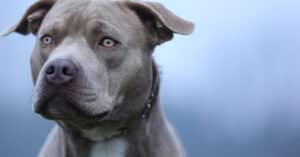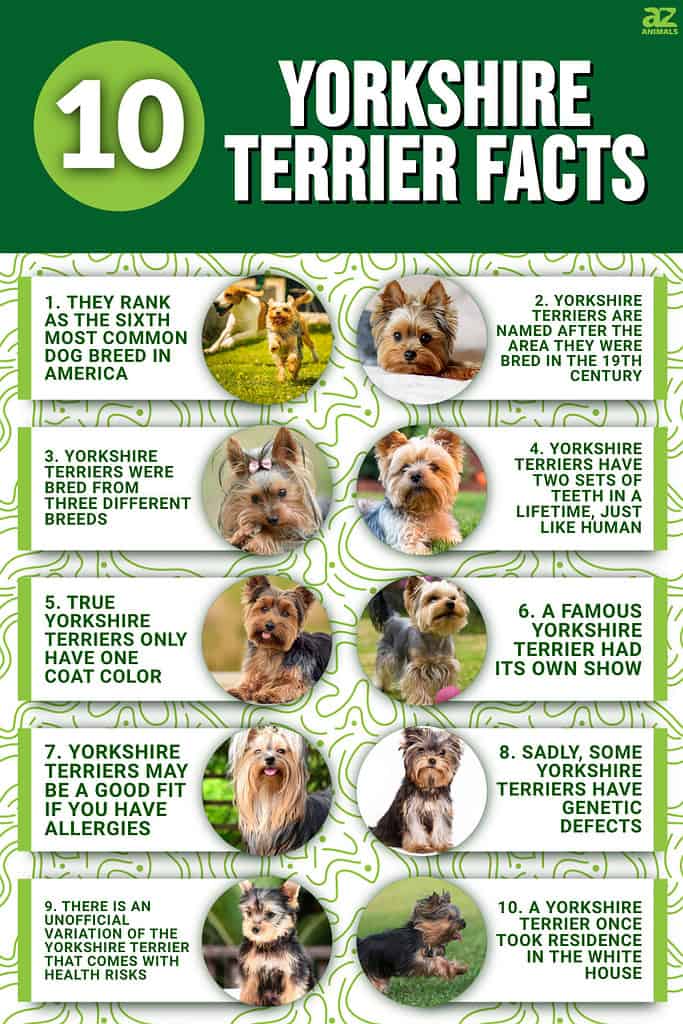
The Yorkshire Terrier, or Yorkie as it is more commonly known, is a small dog breed that belongs to the terrier family. The breed matured in Yorkshire, England, in the 19th century and should weigh no more than seven pounds. Popular as a pet, the Yorkshire Terrier is credited for helping to pave the way for the development of several other dog breeds, notably the Silky Terrier. Their coat coloration ranges from black and brown to silver-grey to blonde. Ready to learn more? Here are 10 Incredible Yorkshire Terrier Facts!
1. They Rank As The Sixth Most Common Dog Breed In America
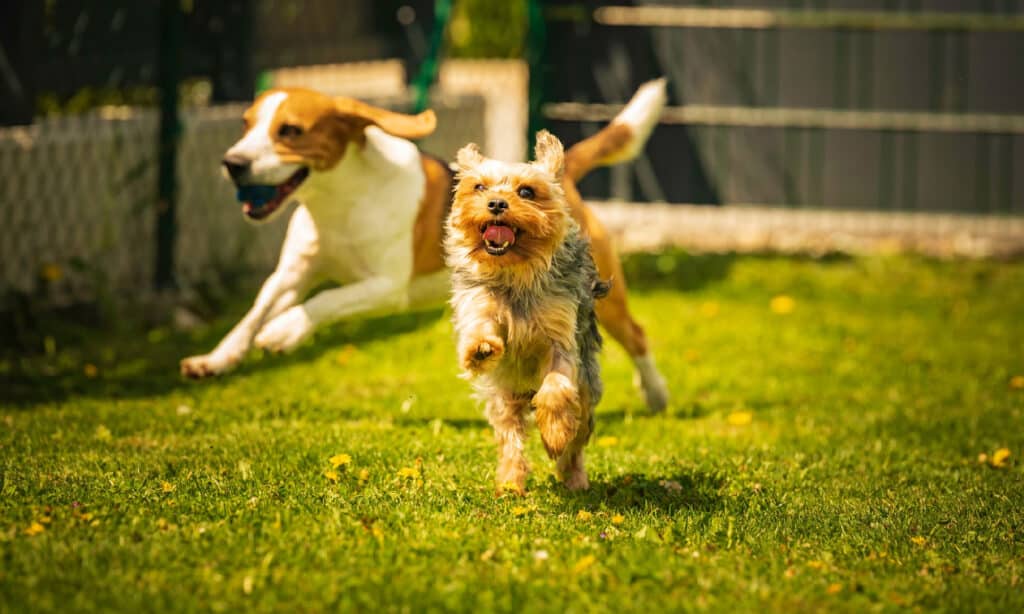
Yorkshire Terrier is one of the most popular dog breeds in the Americas.
©iStock.com/Przemysław Iciak
Presently, the Yorkie ranks sixth among dog breeds in popularity in the Americas, and the AKC confirms this to be the case. This dog’s small stature and friendly disposition have made it a hit in the United States. The United Kingdom (where the breed was first seen) is not the only place it has found widespread acclaim.
2. Yorkshire Terriers Are Named After The Area They Were Bred In The 19th Century
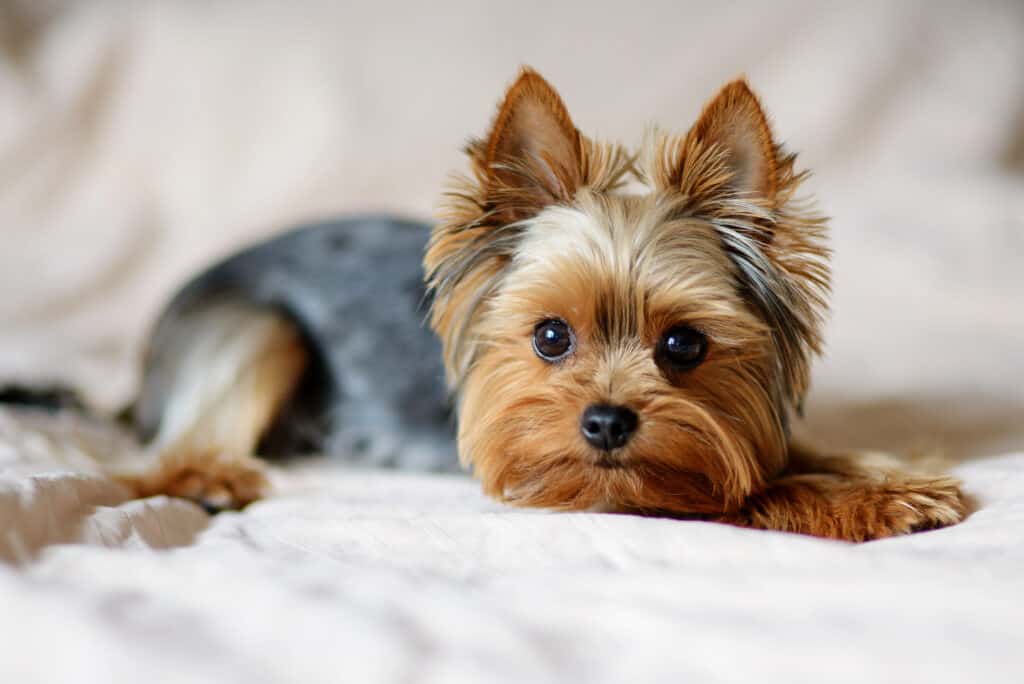
Small breeds like Chihuahuas and Yorkshire Terriers are prone to retaining their baby teeth for extended periods.
©Anna Vasiljeva/Shutterstock.com
The history of Yorkshire Terriers is fascinating. Midway through the 19th century, Yorkshire Terriers were initially raised in the English county of Yorkshire. Many different types of little terriers were brought to Yorkshire by Scottish laborers who came to work there. There are few specifics regarding how the dogs imported to Scotland contributed to the development of the Yorkshire Terrier. It is known that they were originally bred by workers in the cotton and woolen mills.
3. Yorkshire Terriers Were Bred From Three Different Breeds
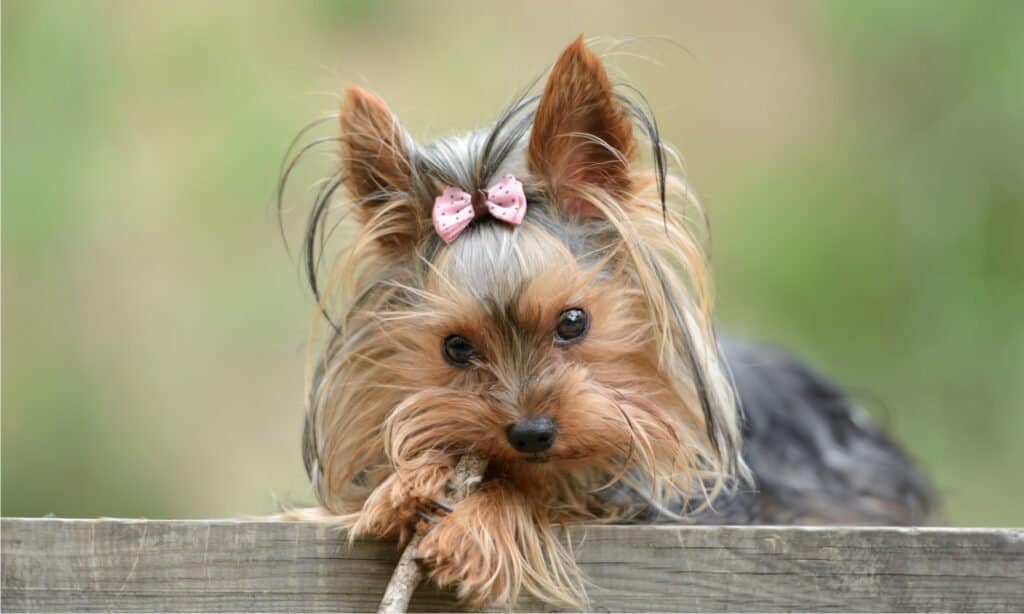
It is thought that the Maltese and Paisley Terrier were employed in the early stages of breeding.
©tsik/Shutterstock.com
These days, people call them Yorkies. The Yorkshire Terrier’s appearance formerly varied significantly, but these distinctions have been eliminated via breeding. At one time, the term “Yorkshire Terrier” was used to describe practically any terrier-type dog with a long coat and coat colors of blue, silver, and tan.
One thing that is known is that three separate dogs were used to develop the breed known as the Yorkshire Terrier. It is thought that the Maltese and Paisley Terrier were employed in the early stages of breeding. Although they were developed using Scottish terriers, they are known as Yorkshire Terriers to honor the region in which they were developed.
4. Yorkshire Terriers Have Two Sets Of Teeth In A Lifetime, Just Like Human
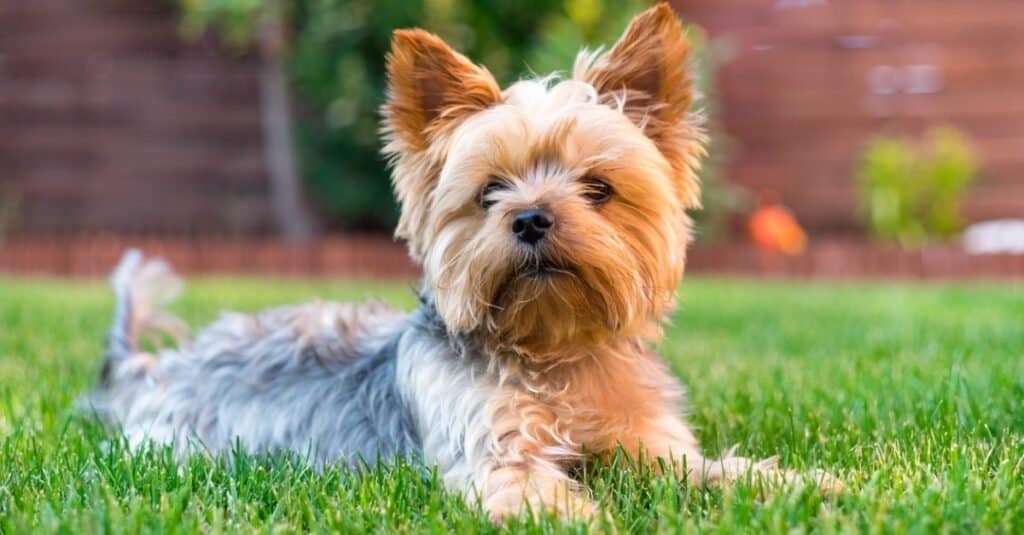
Yorkshire Terriers are often big dogs trapped in little bodies, always looking for adventure and maybe even a bit of trouble.
©iStock.com/Attila Fodemesi
An adult Yorkshire Terrier typically has 42 teeth. This can occasionally change, but it is usually not a problem until a serious bite results. The overcrowding of teeth in Yorkshire Terriers is one issue caused by their narrow jaws, and poor dental health may result if this happens. To avoid further health issues, a veterinarian may need to clean them professionally.
A puppy will initially be toothless, and between the ages of three and eight weeks, their first teeth will start to erupt. They will lose these teeth at around four months of age, and the second set will develop. A Yorkshire Terrier will have two sets of teeth during their lifetime: their milk teeth and their adult teeth, just like humans and the majority of other dog breeds. Their milk teeth, also known as deciduous teeth, have 28 teeth.
5. True Yorkshire Terriers Only Have One Coat Color

Despite being dainty, Yorkshire terriers are known for being feisty and bold.
©iStock.com/Kurt Pas
The Yorkshire Terrier has one approved coat color, unlike many other breeds. A Yorkie has a brown coat and a blue saddle. Variations are called “parti-colors.” Parti-color dogs are white with black, blue, and tan. It’s recessive and rare.
Unusual-colored dogs have health risks. Yorkshire Terrier coat color may take about three years to develop. Some say puppies shouldn’t compete because their genuine coat color could prohibit them from becoming legally recognized.
6. A Famous Yorkshire Terrier Had Its Own Show
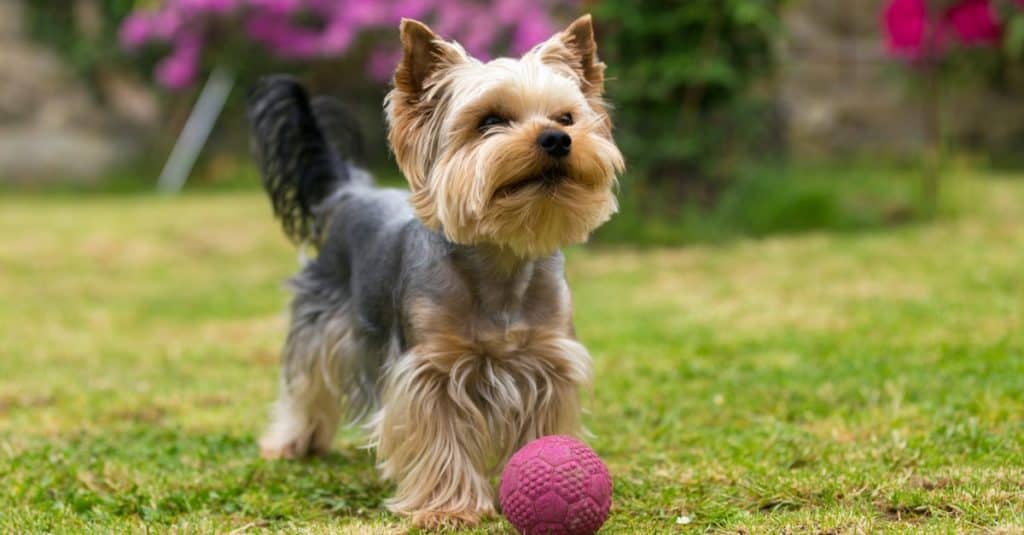
A Yorkshire Terrier and similar breeds routinely rank among the AKC’s top 10 most popular types of dog breeds.
©Artush/Shutterstock.com
The most well-known Yorkshire Terrier in history, Huddersfield Ben, is just one of several notable breeds. He established the standard for the breed as we know it now, which is why he is so well-known. A breed expert once referred to him as the breed’s greatest dog because of his outstanding competition performance.
Huddersfield Ben was a show and stud dog owned by Mary Ann Foster. He quickly earned the reputation of being the breed standard due to his excellent qualities. Famous portrait artist George Earl painted Huddersfield Ben in 1891. He had many pups because everyone wanted a dog just like him. Even today, he is frequently referred to as the breed’s founder.
7. Yorkshire Terriers May Be a Good Fit If You Have Allergies
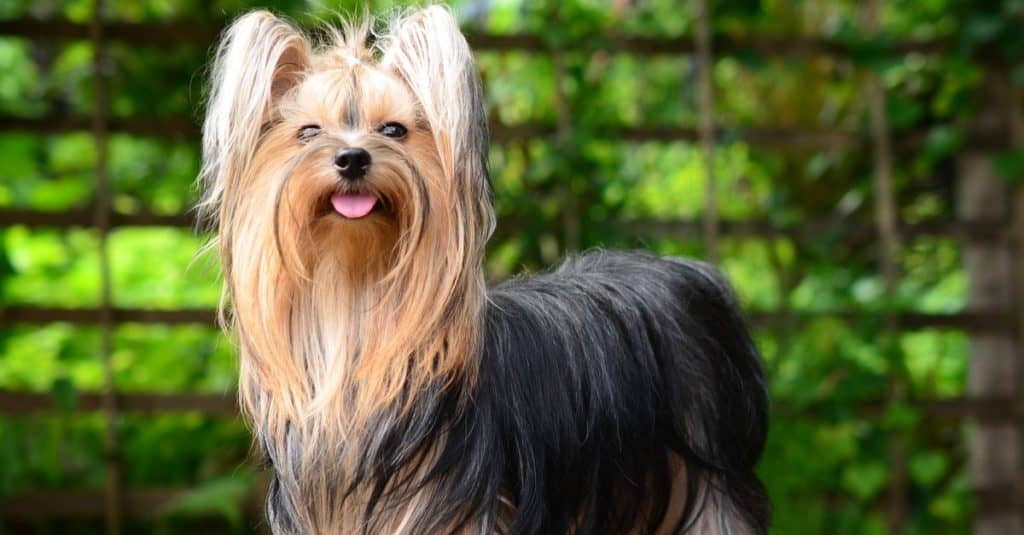
Usually, a Yorkshire Terrier’s saliva or dander will cause an allergic reaction if a person is sensitive to them.
©Mr. SUTTIPON YAKHAM/Shutterstock.com
The Yorkshire Terrier’s hypoallergenic coat is just one of the breed’s many appeals. This is because they often only shed a tiny amount when brushed or bathed, compared to other long-haired dog breeds. There will be very little dog hair in and around their homes, which is wonderful for people allergic to dog hair.
Usually, a Yorkshire Terrier’s saliva or dander will cause an allergic reaction if a person is sensitive to them. According to some scientists, dogs have unique proteins that can cause an allergic reaction in some persons but not others, refuting the claim that the Yorkshire Terrier has a hypoallergenic coat. Therefore, their lack of shedding may have little or no impact.
8. Sadly, Some Yorkshire Terriers Have Genetic Defects
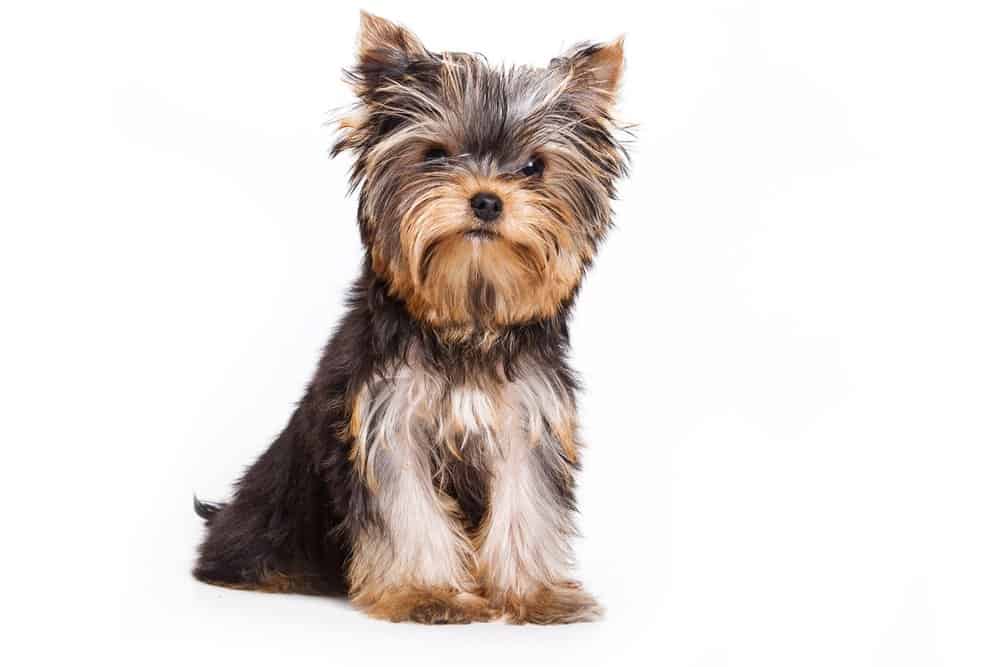
Yorkshires are prone to genetic disorders.
©Utekhina Anna/Shutterstock.com
Yorkshire Terriers may have a high risk of developing various genetic disorders. Distichiae is the most common of these common medical conditions. These follicles produce eyelashes in a peculiar place close to the eye. Corneal ulcers, squinting, corneal abrasions, and general discomfort may also develop.
Another genetic disorder that might manifest in Yorkshire Terriers is hypoplasia. The spinal cord is injured when the pivot point of the second cervical vertebra does not mature. Yorkshire Terriers may be predisposed to other genetic defects besides luxating patellas, Legg-Calve-Perthes disease, tracheal collapse, and portosystemic shunt.
9. There is an Unofficial Variation of the Yorkshire Terrier that Comes With Health Risks
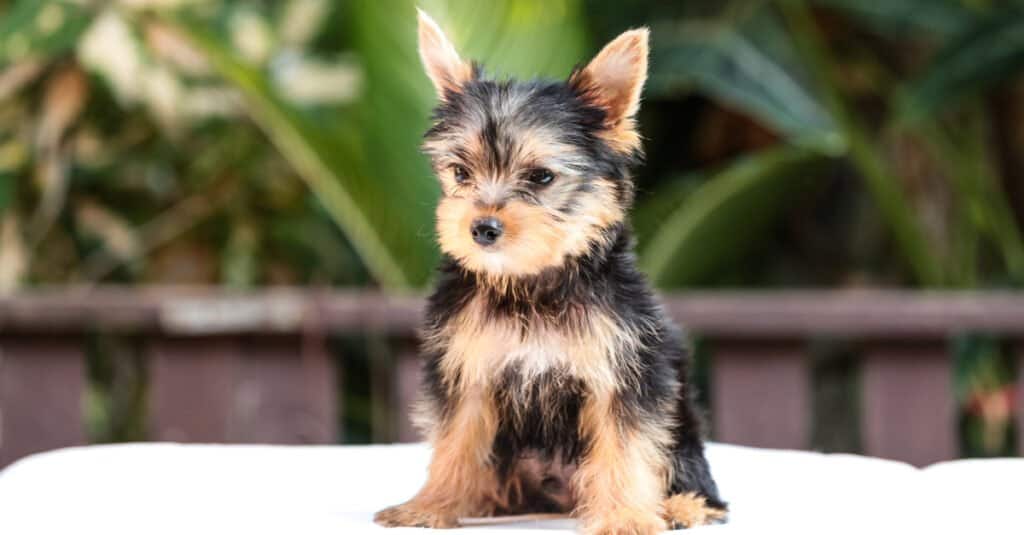
Teacup breeds tend to have shorter lifespans due to breeding.
©DOPTOON/Shutterstock.com
A fully grown Teacup Yorkie weighs less than 4 pounds, despite the mature Yorkshire Terrier weighing over 7 pounds. Most Kennel Clubs don’t recognize the “Teacup Yorkie” Yorkshire Terrier breed. For example, the AKC doesn’t accept it as a breed. This variation is purposefully produced to exhibit puppy-like features without considering the health risks. Responsible breeders discourage Teacup Yorkie breeding.
Teacup Yorkies are too small to give birth normally and require a cesarean section, which could kill the mom and her offspring. Teacup Yorkies have greater health difficulties than ordinary Yorkies. These disorders include hydrocephalus, epilepsy, luxating patellae, chronic pelvic pain syndrome, and open fontanels.
10. A Yorkshire Terrier Once Took Residence in the White House
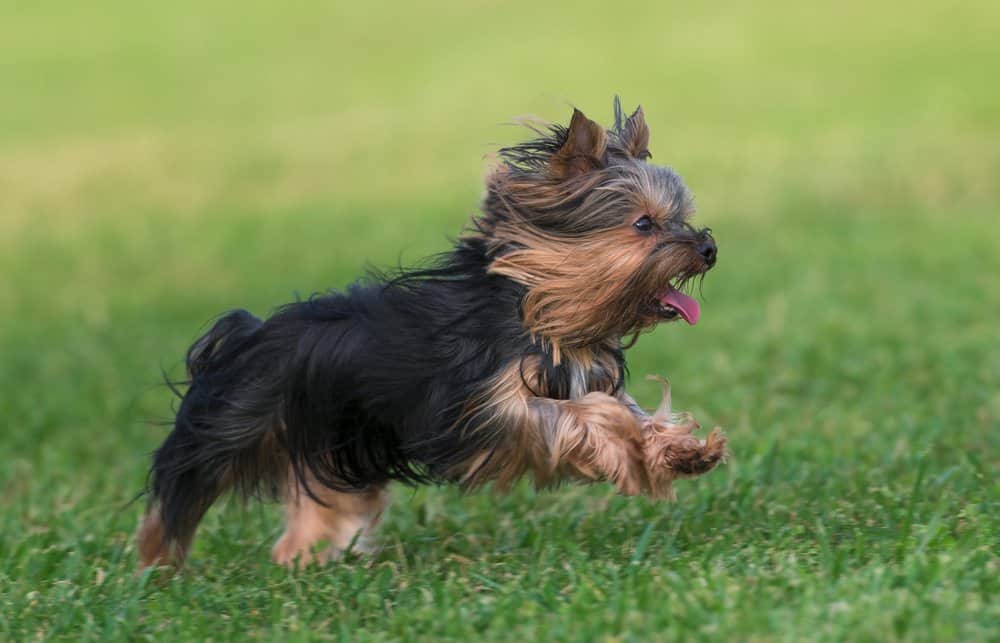
Not only did Patricia Nixon Cox have a Yorkshire Terrier, but so also does Ivanka Trump.
©tsik/Shutterstock.com
Many famous people have had Yorkshire Terriers. For example, Tricia Nixon Cox, the daughter of the 42nd President of the United States, Richard Nixon, was one of them. Her dog, Pasha, was a White House resident while Richard Nixon was in office. Not only did Patricia Nixon Cox have a Yorkshire Terrier, but so did Ivanka Trump, the eldest daughter of former President of the United States, Donald Trump. Even more elite people have had Yorkshire Terriers as pets, likely contributing to the breed’s continued popularity among A-listers.
The photo featured at the top of this post is © iStock.com/Kurt Pas
Ready to discover the top 10 cutest dog breeds in the entire world?
How about the fastest dogs, the largest dogs and those that are -- quite frankly -- just the kindest dogs on the planet? Each day, AZ Animals sends out lists just like this to our thousands of email subscribers. And the best part? It's FREE. Join today by entering your email below.
Thank you for reading! Have some feedback for us? Contact the AZ Animals editorial team.





